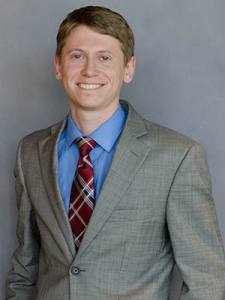The number of agencies in Dallas County licensed to provide nonmedical home care grew by 22 in the last three years, bringing the total to 670 as of September, according to the Texas Health and Human Services Commission. In Collin County, licensed facilities grew by 18 over that same period, bringing the total to 160.
While some of these agencies also offer medical services, such as home nursing or hospice care, they all have state approval to meet more routine needs—from help with hygiene and medication reminders to transportation.
These tasks, which typically fall on friends and family members, are essential for those who are no longer able to perform them for themselves because of their age or a disability.
offer nursing or hospice care, they all have state approval to meet more routine needs—from help with hygiene and medication reminders to transportation.
These tasks, which typically fall on friends and family members, are essential for those who are no longer able to perform them for themselves because of their age or a disability.
“Most of the hands-on care for older adults who have disabilities is not provided by licensed professionals,” said Doni Green, director of aging programs for North Central Texas Council of Governments. “It’s provided by home health aides and medication aides. There’s a critical shortage with those direct care workers.”
A GROWING INDUSTRY
Richardson’s population has been aging in place for years, fueling growth in demand for a number of services that cater to the elderly.
The share of Richardson residents who are 65 or older rose by 46% from 2010 to 2017, according to the American Community Survey’s five-year estimates. By the end of this period, adults in this age group totaled 16,517 people, or nearly 15% of the city’s population.
Demand for senior care has led to a saturated home care market, said Bent Schoellhorn, owner of Senior Helpers of Greater Dallas. But fairweather workers are quickly weeded out by the grueling demands of the job.
“There’s a lot of people who got into this business and then got out,” he said. “It’s a yo-yo every day, and it’s just crisis all the time.”
Nonmedical care providers cannot administer medicine, but they can assist with other routine activities, such as preparing meals, using the restroom or bathing. Unlike home health workers, in-home caretakers typically spend anywhere from four to 24 hours a day with their clients, Schoellhorn said.
“I would say we do the hardest part of the work because we are there for so many hours with them,” he said. “We don’t leave—our caregivers really get to know their seniors.”
The nonmedical side of a client’s home care is highly personalized, said Ben Isaac, owner and client care specialist of Home Care Assistance in Richardson. Where nursing home staff may be supervising multiple seniors at a time, in-home caretakers are able to develop meaningful, one-on-one relationships, he said.•“The caregiver that comes is dedicated to you and you specifically—what your concerns are, what your issues are,” he said. “They can take the time to meet those needs.”
At Home Care Assistance, personalized care plans are tailored to each client’s physical, mental and social needs. Caretakers prepare nutritious meals and set aside time each day for exercise and cultural activities.
“We dedicate time to making sure that the client is enriched in some way,” Isaac said.
But pairing seniors with the right caretaker is not always easy, Schoellhorn said. High levels of turnover mean companies are constantly hiring new people. At Senior Helpers, about a third of Schoellhorn’s 140 caretakers have been with the company for less than a year, he said.
FILLING THE CARE GAP
There is a shortage of professional caregivers in North Texas, said Green, NCTCOG aging programs director. That gap appears to be driven in part by low pay and lack of benefits, she said.
According to the U.S. Bureau of Labor Statistics, home health and personal care aides had an average annual income of $24,060 last year. Their average hourly pay was $11.57, according to the bureau.
Statistics show that there will be a need for nearly 1.9 million more home health and personal care aides in the U.S. by 2028.
Home health and personal care aides help people with disabilities, chronic illnesses or cognitive impairment with their daily living routines, according to the bureau.
“That’s where I see the real crisis coming—when fast food pays better than those direct care professions,” Green said. “It’s just really, really difficult to find qualified people who will stay in the profession for any amount of time.”
The Bureau of Labor Statistics also projects that there will be a steep increase in demand for nursing assistants and orderlies, who help provide basic care for patients in hospitals and residents of long-term care facilities, such as nursing homes. By 2028, there is expected to be demand for nearly 1.6 million additional positions in this field.
“There’s definitely some challenges in terms of professional caregivers, but I think it’s important to recognize that most of the care that’s provided to dependent older adults is [provided] by unpaid family members,” Green said. “So they really are the backbone of our long-term services and support system.”
Anna Herod and Olivia Lueckemeyer contributed to this report.








